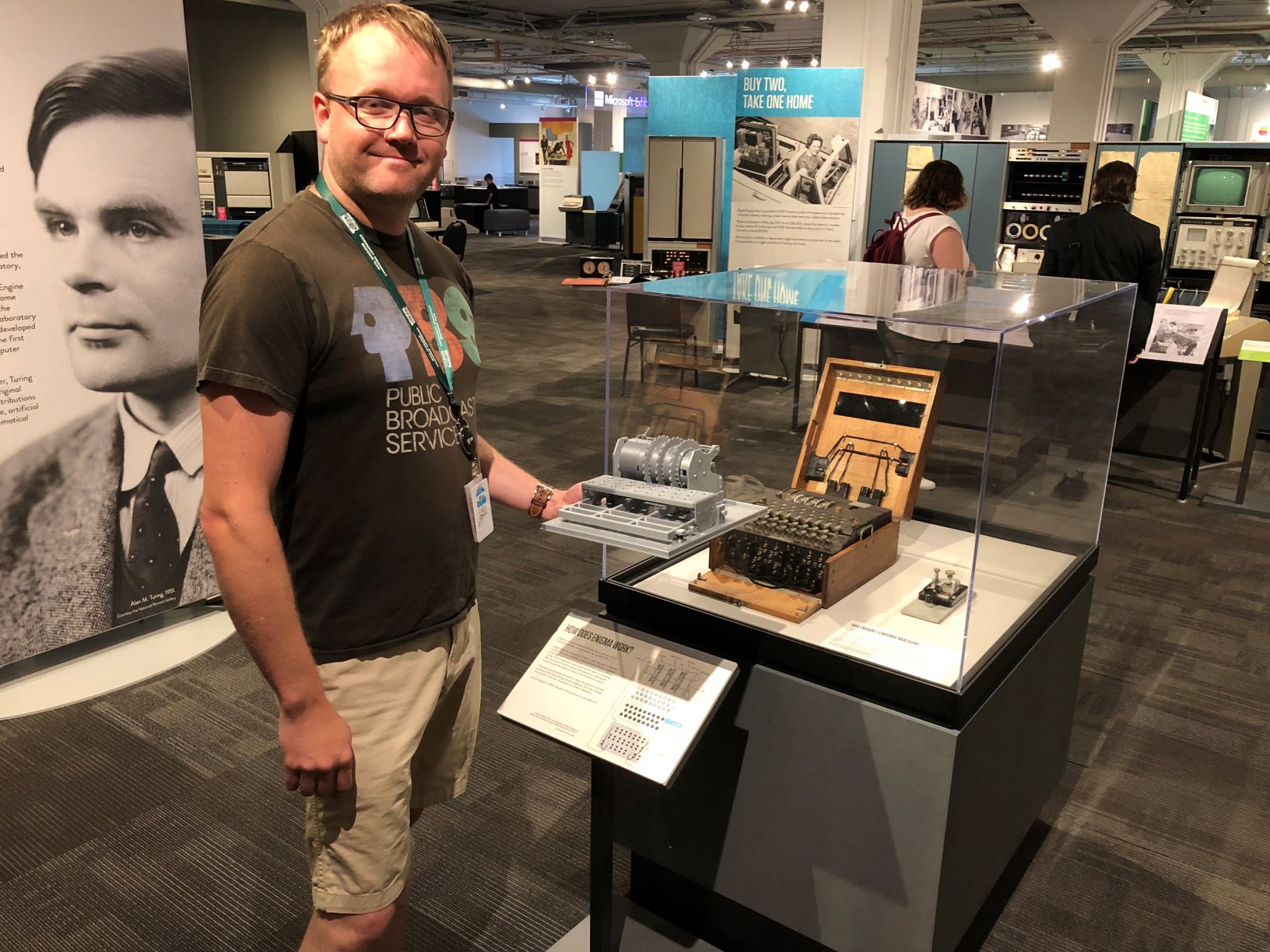Hi all – I’ve not had a ton of time recently to update the Enigma machine, so here’s a quick rundown of where I’m at. Keep reading for something really cool.
- Modeling: mostly done. I think I have pretty much everything modeled at this point with the exception of the individual keyboard keys.
- Printing: mostly done. I think I have everything printed that I’ve modeled so far with the exception of one really large piece I’m trying to decide how best to split and print.
- Assembly: 50% done. I’m trying to figure out how best to deal with some of the threaded parts, as my tap/die set leaves about 2mm of unthreaded surface when cutting down to a step. May fall back to switching some of these parts to friction-fit rather than screw-in.
- Mechanicals: I need to learn to make springs. The Enigma has several types of springs: extension, torsion, and compression, and they all have different nuances to making them.
So, a few weeks ago I found out the Living Computers Museum + Labs in Seattle has an M4 Naval Enigma on display. I visited the museum a few weeks back, and got introduced to their executive director, Lath. I shared via email with him some info about my project, and then found out they actually bring their Enigma out from the climate-controlled confines periodically to demonstrate it to visitors. I asked if I could bring my in-progress assembly down and was told yes! Well, today I skipped out of work midday to bring my parts down to compare, and took my good friend Jeff who documented the whole thing in photos — I was too giddy to take my camera out! Lath was kind enough to open and remove the rotors from their Enigma (they had never actually done that since acquiring the fully working machine!) so I could see some of the innards. The good news is my reproduction looks pretty spot-on, with the exception of some of my color choices for printing. I may re-print some of my machine parts to better match the museum’s specimen.
Their machine is an M4 Enigma, which was developed very late in the war and only used by the Kriegsmarine. The one I’m modeling after as best as I can tell is an M1 Enigma from very early in the war, and used by the army. We noted a number of design changes – the obvious one being that the M4 has 4 rotors versus the M1 having 3, but other things as well:
- M4 Enigma has lamp test positions on the lamp board
- M4 Enigma nylon rollers are screwed and bolted in place, while the M1 had pins that screwed directly into the roller arms.
- The rotor designs are slightly different, especially the initial setting rings (letters on M4 versus numbers on M1, and different latch mechanisms)
It was pretty amazing to watch the machine operate and be set up. The mechanics of how it moved were so tactile and smooth, which is impressive for an un-restored 70-year old machine. German engineering, as they say.
Massive thanks to Lath for making my day and letting me explore the Enigma a bit and compare my parts with the real thing. What an amazing experience. He asked that I keep him posted on my progress, so as I get the mechanicals working more I hope to bring the machine back down to the museum in the future.





